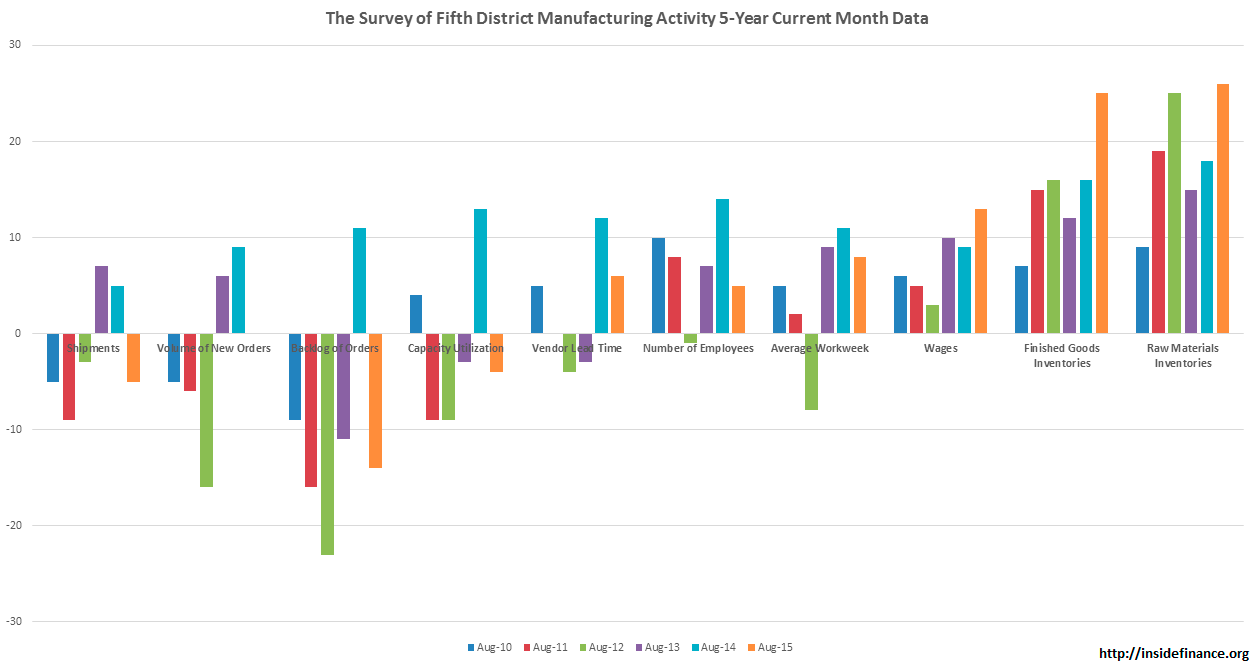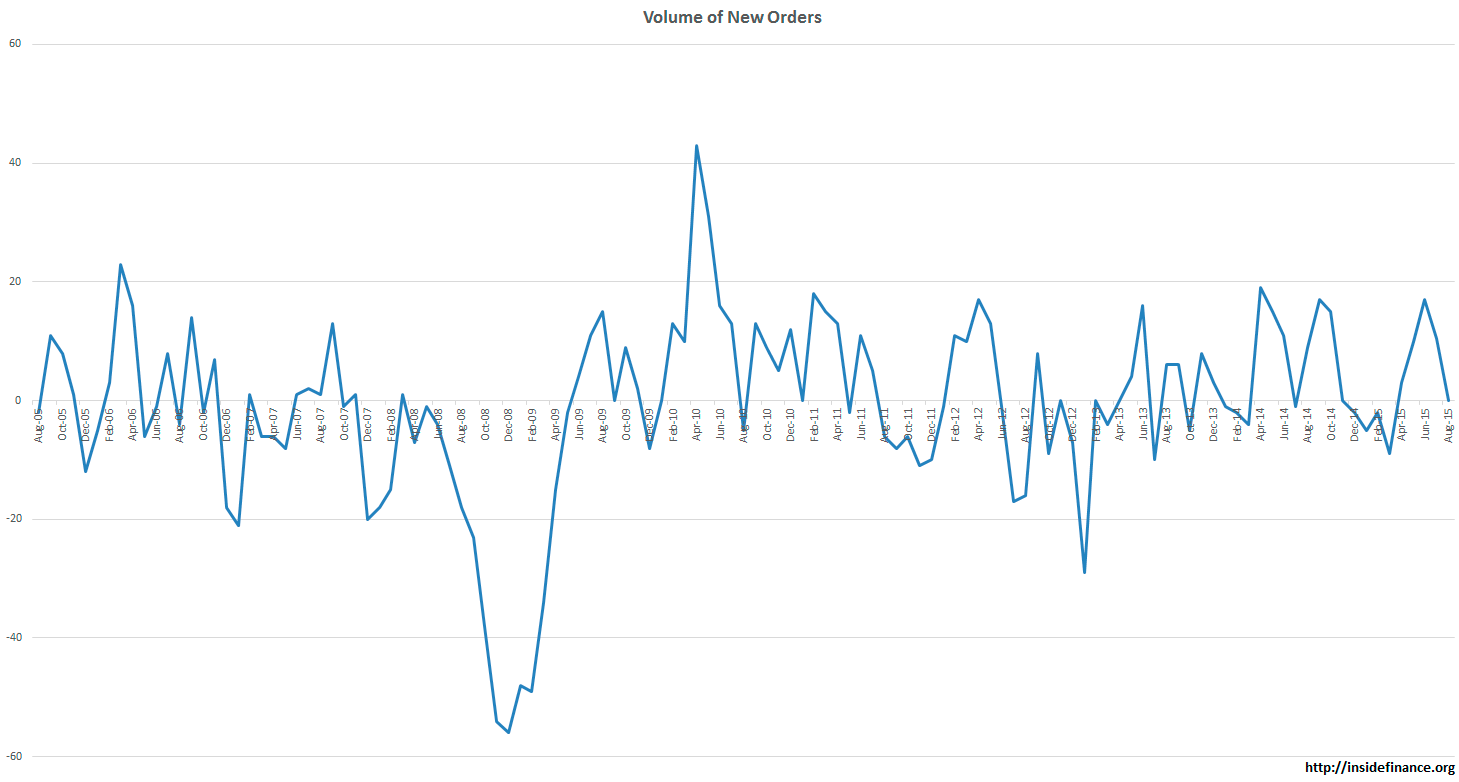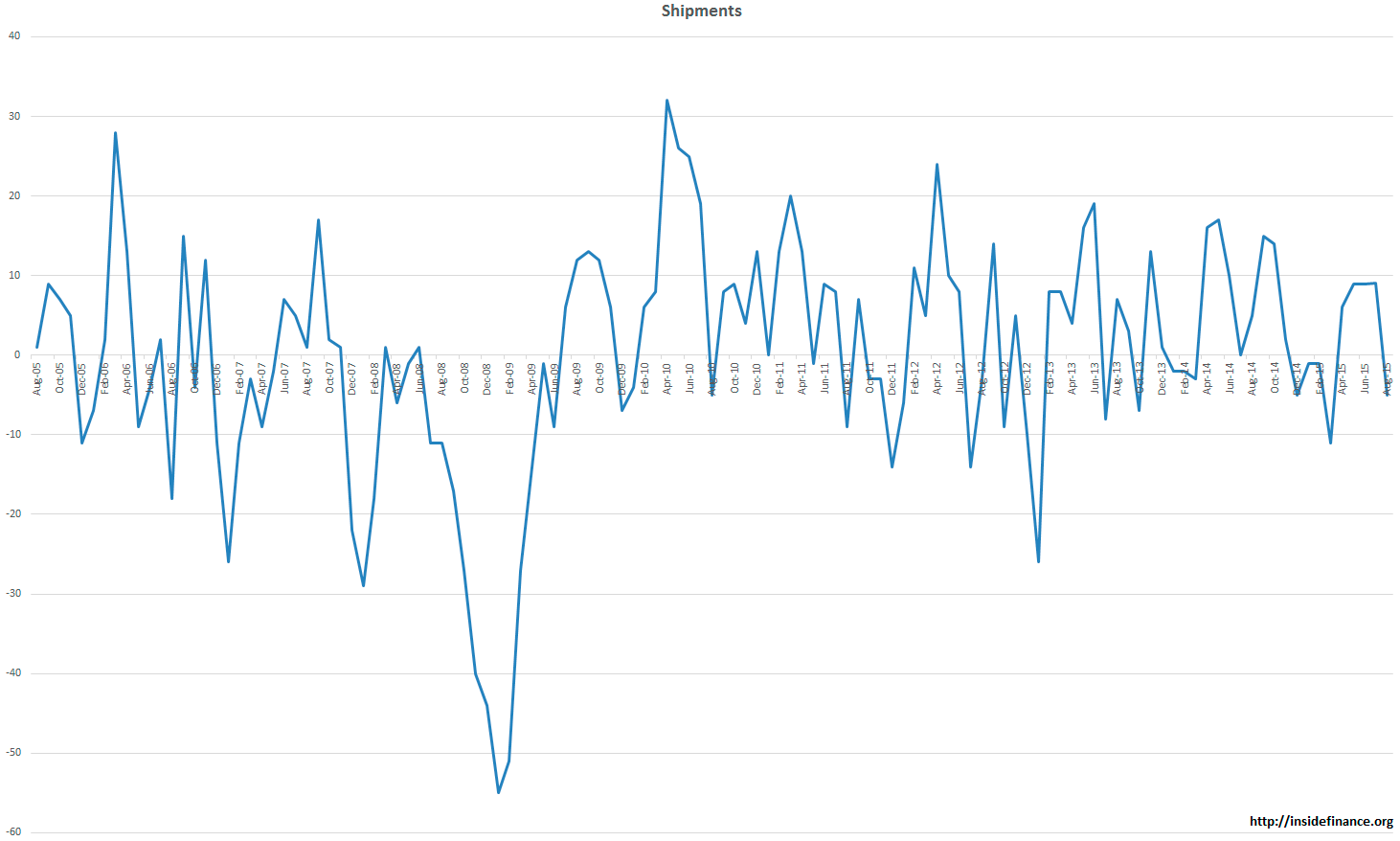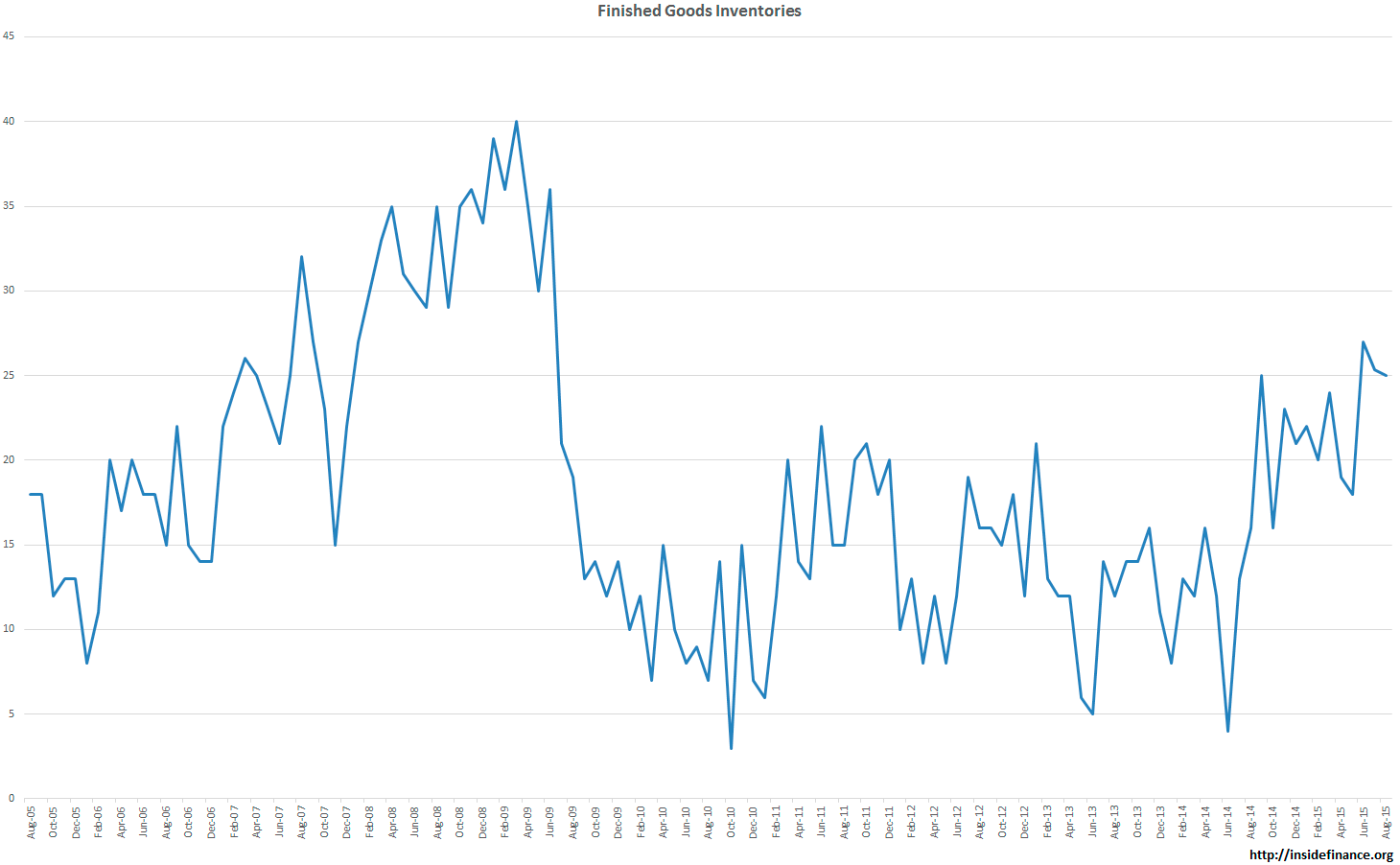Each month the Richmond Federal Reserve Survey of Manufacturing Activity is sent out to 220 firms in an attempt to form a profile of its district, with about 100 respondents:
Respondents provide information on current activity, including shipments, new orders, order backlogs, and inventories. In addition, manufacturers inform us about employment conditions, prices and their expectations of business activity for the next six months. The summary results of each survey are provided to the public on the fourth Tuesday of the month.
According to Moody’s:
The diffusion indexes are calculated as the percentage of respondents reporting improvement minus the percentage reporting deterioration. Each diffusion index ranges from -100 to 100, where positive values correspond with increased activity from the prior month. An index level of zero indicates that a particular measure, such as new orders, was unchanged from the prior month. The data are also seasonally adjusted.
They also provide a good overview of the benefits and limitations of the survey, and what might be most helpful:
What to look for
- The shipments index provides a good snapshot of demand conditions.
- The employment index shows the manufacturing sector’s effect on the region’s labor market.
- Of all the components of the survey, the new orders index is the best leading indicator.
- The expected employment index gives an indication of what hiring trends will be over the next few months.
Strengths
- Timeliness.
- The survey includes a wide variety of indicators of the manufacturing sector’s health, including shipments, new orders, unfilled orders, and employment.
- The survey provides an excellent overview of current manufacturing conditions in the Federal Reserve’s Fifth District.
- The new orders index and the unfilled orders index are good leading indicators of manufacturing activity.
Weaknesses
- Strikes or other temporary factors can sometimes create large changes from month to month.
This month’s survey showed a mixed bag of opinions, including fairly soft responses, yet optimistic expectations:
Fifth District manufacturing activity slowed in August, according to the most recent survey by the Federal Reserve Bank of Richmond. Shipments and order backlogs decreased, while new orders flattened this month. Manufacturing hiring softened this month; however, average wages continued to increase at a moderate pace. Prices of raw materials rose more slowly in August, while prices of finished goods grew slightly faster compared to last month.
Despite the soft current conditions, producers remained optimistic about future business conditions. Expectations were for solid increases in shipments and in the volume of new orders in the six months ahead, with increased capacity utilization. In addition, manufacturers looked for rising backlogs and longer vendor lead times.
Below is a graphic look at each category for the last ten years, each measured in August (click image for full size; also note, zero shows no bar, such as Volume of New Orders in Aug-2015):
Below are a few other highlights spanning a ten-year trend (click image to enlarge):




